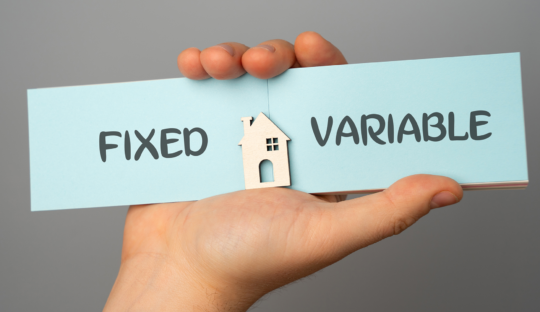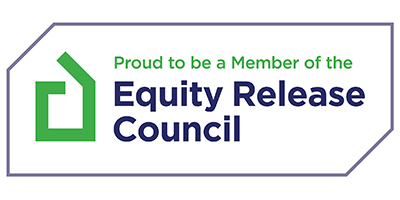In this article
As a hard-working mortgage broker, we always like to help first-time buyers get the most out of their mortgage process.
To achieve this, we have compiled a list of the 10 steps first-time buyers will face during the house buying process.
In doing this, we sincerely hope you can be as prepared as possible for your mortgage journey.
Our 10 Step Guide to Buying a Property
Explained in under 7 minutes
Find more videos like this on MoneymanTV
There are 10 primary steps you’ll experience during the house buying process and also when obtaining a mortgage. These steps are;
- Free Mortgage Appointment
- Mortgage Affordability Assessment
- Agreement in Principle
- Find A Solicitor
- Make an Offer
- Submit Your Documents
- Formal Mortgage Application
- Valuation/Survey
- Mortgage Offer
- Completion
1. Get in Touch for Your Free Mortgage Appointment
Let’s start off with that first step, with you taking the leap and purchasing your very own home, taking out your very first mortgage.
There is no doubt in our mind that this will probably be the biggest financial choice of your life.
Realising this can leave you feeling a little concerned, especially when you have no experience in the home-buying world.
Here your dedicated mortgage broker may be able to step in and provide you with expert assistance.
Our team here at UK Moneyman will always strive to take the stress & worries away from our customers, giving our all to make sure they all are happy, have a great mortgage deal and at the end of it all, their very own home.
We’ll book you in for a free initial mortgage appointment with one of our experienced mortgage advisors.
During this, we’ll take some personal information from you and take a look at your plan, before we eventually get the ball rolling on your mortgage process.
2. Mortgage Affordability Assessment
Throughout your free mortgage appointment, a trusted member of our mortgage advice team will be able to run through a Mortgage Affordability Assessment with you.
This is a relatively quick process and is key to getting a mortgage, as this is where your dedicated mortgage advisor will look at your monthly income with you, looking at what you regularly spend your money on.
Basically what they’re here is looking at your spending habits, to determine whether or not you are financially reliable for something like affording and keeping up with your monthly repayments.
We take a look at this ahead of time so that we can put you forward to a mortgage lender with the utmost confidence in your ability to maintain these repayments.
Through this part of the house buying process, we can identify various elements that stick out and hopefully avoid the risk of arrears and any future repossessions that may happen.
Contrary to the belief of others, this is something the lender will want to avoid if at all possible.
A Mortgage Affordability Assessment is something that will typically also be taken out by the lender, so the primary checks we go through with you will help save the lender’s time, our own time, but most importantly of all, your time.
The last thing any of us need is for your application to fall through due to failing on affordability.
Speak to an Advisor – It’s Free!
Schedule a free callback from one of our experts today.
- All situations considered
- Transparent and honest mortgage advice
- We search 1000s of purchase and remortgage deals
Our customers rate us 4.9/5
2. Obtaining a Mortgage Agreement in Principle
What will happen next, is we will look to get a document called an Agreement in Principle, on your behalf. If you have done your research in preparation for enquiring about first-time buyer mortgage advice, you may have seen this flaunted under a few different banners.
We generally see these being referred to as ‘Decision in Principle’, ‘Mortgage in Principle’, ‘DIP’ & lastly, ‘AIP’. These are all the same thing; with the only difference being the name used.
The main reason you will need to have obtained an Agreement in Principle before going forward is for concrete proof that you have passed a lender’s initial credit scoring system, either by them doing a hard credit search (this leaves a credit footprint) or doing a soft credit search (this is not often known to leave a credit footprint).
Whilst this is incredibly helpful, it is unfortunately not a guarantee that you will be accepted for a mortgage.
Even still, it is a necessary and hugely beneficial step that we recommend home buyers take, as it will also show the seller of a property that you are a serious buyer in waiting, possibly creating room for you to negotiate with them when it comes to making an offer on their property.
You’ll find that generally an AIP will last somewhere between 30-90 days, and once it has expired, your mortgage advisor can renew this for you.
We’re quick and efficient, usually able to get one of these turned around for you within 24 hours of your initial mortgage appointment.
4. Finding the Right Solicitor
Now that you have managed to obtain an Agreement in Principle, it is time to start looking for a conveyancer who can help you with the legal dealings of your home-buying journey.
Conveyancing is the name that is used for the transfer of legal ownership of property between the different parties (the buyer or the seller).
Your conveyancing solicitor will sort out all the contracts for you, give you any legal advice that you need, conduct local council/authority searches for you, help make arrangements with the Land Registry and last of all transfer the funds you have gained from the lender
This is so that you can pay for your new home. As you may be able to see from what is involved here, this is such an important role in your house buying process and requires careful planning and choosing.
You should also know that licensed conveyancers are property specialists and are unfortunately not able to deal with more complex legal issues, whereas a more general solicitor will be able to offer their customers a larger range of services, though this can make them seem more expensive to a home buyer.
Whilst we do not offer these services ourselves, our advisors do have their list of trusted companies that if necessary, we can refer you to.
5. Making an Offer on a Property
You have reached the point of speaking to a fast & friendly mortgage broker and have passed the Mortgage Affordability Assessment.
You will have also managed to obtain your Agreement in Principle and have carefully selected a conveyancing solicitor that you can trust to help process the legal elements of your home buying experience.
You’re halfway there, now let’s look at making an offer on the property in question.
As we mentioned a little earlier on, now that you have an Agreement in Principle, you will be more successful in negotiating with the seller on the price of the property.
Try your best not to insult the seller with a lower offer, but also don’t be afraid to negotiate for a lower price than what they’re looking to make.
The old saying is “if you don’t ask, you don’t get” and there are plenty of homeowners out there who are happy to take a little bit less than what their asking price has been listed as.
Informing the seller that you have already agreed in principle will increase the likelihood of having an offer accepted, as you are prepared for what will come next, rather than someone who is willing to pay the asking price but is nowhere near ready to get started.
If we look at the worst case, the seller will say no to your offer, but once you’re here you can either come to an agreement on a better price or mutually agree to disagree and go find yourself another property that you’re more willing to pay the price for.
Once that offer has been accepted, it’s now time to speak with your mortgage advisor and head towards the finish line of your mortgage journey.
6. Submit Your Documents
From the excitement of reaching the halfway mark, to a more serious and hugely important step; submitting the required documents to go forward with a mortgage.
Because a mortgage is such a large financial commitment, the mortgage lender won’t just lend to everybody. This is something that has happened in the past and if you cast your mind back to 2007-08, it was an economic disaster.
Your lender will require various pieces of documentation to prove your identity, the amount you are earning, your current residence and how you manage your finances every month. If you’re applying for a joint mortgage, they will need this from both of you.
To do this, the types of recommended documentation include; proof of ID, proof of your address, the latest 3 months’ of your pay slips and most recent P60 (employed), proof of any income such as state benefits or maintenance, proof of your deposit, the latest 3 years’ proof of earnings and Tax Year Overviews (self-employed) and the last 90 days of your bank statements.
7. We’ll Progress Your Mortgage Application
You have had your mortgage agreed in principle and the seller has accepted your offer.
Now that you’re prepared for a mortgage and have had everything checked over by your dedicated mortgage advice team, we are now ready to submit your full mortgage application.
Your mortgage advisor will send off all the evidence they have collected from you for this. What follows is simply the waiting game, being patient and hoping that they respond with (preferably) an accepted application.
Whilst you will not be given a specific amount of time in which to expect a response, our team will be able to chase the lender and find out what their answer is, keeping you in the loop as they go.
8. Property Valuation / Survey
In between your mortgage application and being offered a mortgage, the lender will require you to undertake a property survey.
This will usually be carried out by accredited companies that the lender will recommend from a list of surveyors they trust.
This is done so that the mortgage lender can understand what the true value of the property is, versus what you’re going to be paying for it.
If you’re paying a lot higher than it is worth on the open market, the lender may be less willing to lend the amount you’re asking for, if at all.
The reason for this is that if any arrears were to occur at a later date, they would most likely not make their money out. This is usually referred to as a ‘down valuation’.
There are a fair few different types of surveys available to customers, with the price varying on each.
A lot of them will just want to check how much the property is worth, whereas some of the other surveys may let you know of any structural concerns, as well as some potential repairs that you should consider looking into down the line.
Your mortgage advisor will be able to suggest what the right property survey to have done may be.
9. Receiving Your Mortgage Offer
Your journey is almost complete! Your lender has now analysed your case and has carefully assessed all the documented evidence provided. Once they have done this, you will receive a mortgage offer from the lender.
Our loyal and caring mortgage team, that throughout your mortgage process you’ve probably gotten to know quite well, will check over the offer on your behalf, looking closely to make sure everything is correct and as you wanted it in the first place.
After your mortgage offer has been received, it’s down to your conveyancing solicitor to take the purchase from this point, all the way through to completion.
10. Completing The Process
Congratulations are in order, you’ve now officially gone from a first-time buyer to a first-time homeowner, with your very own home. We sincerely hope that all of your worries are now in the rearview mirror and that you’re both happy and ready to begin your new life in your dream home!
The only part of the process that is left is for you to get your keys and start moving your belongings in! From the bottom of our collective hearts, we hope you enjoyed speaking to our mortgage advice team along the way and were given the fast & friendly service all of our customers deserve.
If you opt to proceed with a fixed-rate mortgage, we will be in touch with you towards the end of your journey, to help you out with remortgage advice!







